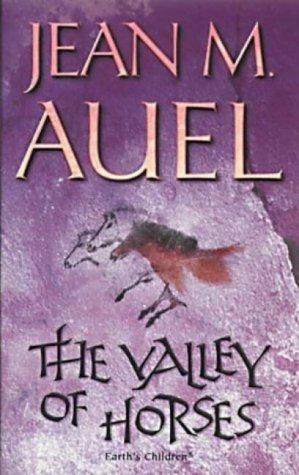
Book review of The Clan of the Cave Bear, the first book in Jean M. Auel’s epic Earth’s Children series set in prehistoric Europe.

This post may contain affiliate links, which means I may receive a commission, at no extra cost to you, if you make a purchase through a link. Please see our full disclosure for further information.
Synopsis
Set in prehistoric Europe, this is the first book in the Earth’s Children series. Ayla is a young cro-magnon human taken in by a group of Neanderthals after her people are killed in an earthquake.
‘The Clan,’ as they call themselves, come to love Ayla, despite her strange actions and ugly (they think) appearance. The medicine woman, Iza, adopts her as her daughter as teaches her about herbs and healing. However, the son of the leader’s mate, Broud, hates her and does everything he can to make Ayla’s life miserable.
Review
I loved The Clan of the Cave Bear. It was a gripping story about people and their relationships, many of which appear unchanged for thousands of years. I could really sympathise with Ayla’s struggles to fit in; so much of the book felt familiar and relatable to modern experiences.
My favourite thing about this book is looking at the differences and similarities between humans and Neanderthals. I don’t know how much of it was true (especially the cultural stuff), but it was realistic.
Creb was thunderstruck. How had the girl been able to grasp the idea so quickly? She hadn’t even asked what slash marks had to do with fingers, or what either had to do with years. It had taken many repetitions before Goov had understood. Creb made three more slash marks, and put three fingers over them. With only one hand, it had been especially difficult for him when he was learning. Ayla looked at her other hand, and immediately held up three fingers, folding down her thumb and forefinger.
“When I am this many?” she asked, holding out her eight fingers again. Creb nodded affirmatively. Her next action caught him completely by surprise, it was a concept he had spent years mastering himself. She put down the first hand and held up only three fingers.
“I will be old enough to have a baby in this many years,” she gestured with assurance, positive of her deduction. The old magician was rocked to his core. It was unthinkable that a child, a girl child at that, could reason her way to that conclusion so easily.
I thought that Broud was an unconvincing villain. His evildoing felt cartoonish and grotesque. He was like a spoiled child. I think the problem was his motivation; he didn’t like Ayla because she was different and because people paid attention to her but not him.
The Clan of the Cave Bear intelligently explored some serious issues that are still present in society today. The Clan have strict gender roles and are incredibly resistant to change. It made me wonder how modern society would treat Neanderthals if they were still alive today.
Conclusion
Have you read The Clan of the Cave Bear? What did you think? Do you agree with what I’ve said about it? Let me know in the comments.
If you haven’t, you can buy it at Book Depository (they have free international shipping!) or Waterstones (free delivery on UK orders over £25, will ship internationally).






